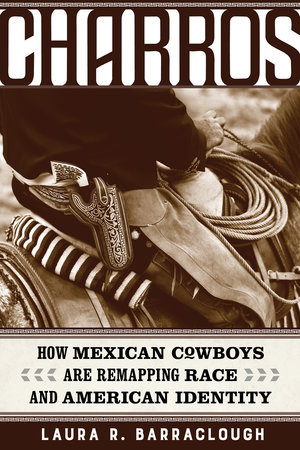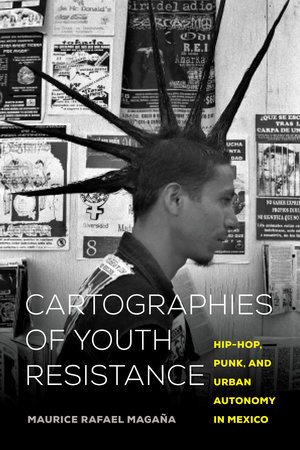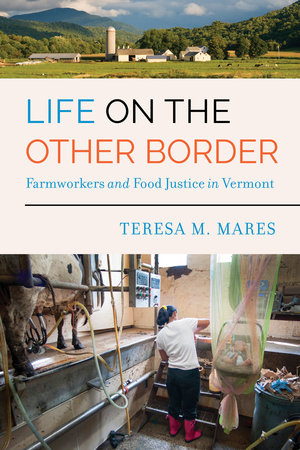Happy National Hispanic Heritage Month! Each year from September 15 to October 15, we recognize and celebrate the heritage, the culture, and the contributions of Americans whose ancestors came from Spain, Mexico, the Caribbean, and Central and South America.
To showcase the unique history and experiences of Hispanic and Latinx Americans and to recognize their vital place in our country’s culture, we have curated the following list of recommended titles. Also, be sure to check out reading lists from previous years. Happy #HispanicHeritage Month, and, ¡por favor, disfruta de estas recomendaciones!
An American Language
The History of Spanish in the United States
by Rosina Lozano
An American Language is a tour de force that revolutionizes our understanding of U.S. history. It reveals the origins of Spanish as a language binding residents of the Southwest to the politics and culture of an expanding nation in the 1840s. As the West increasingly integrated into the United States over the following century, struggles over power, identity, and citizenship transformed the place of the Spanish language in the nation. An American Language is a history that reimagines what it means to be an American—with profound implications for our own time.

Charros
How Mexican Cowboys Are Remapping Race and American Identity
by Laura R. Barraclough
In the American imagination, no figure is more central to national identity and the nation’s origin story than the cowboy. Yet the Americans and Europeans who settled the U.S. West learned virtually everything they knew about ranching from the indigenous and Mexican horsemen who already inhabited the region. The charro—a skilled, elite, and landowning horseman—was an especially powerful symbol of Mexican masculinity and nationalism. After the 1930s, Mexican Americans in cities across the U.S. West embraced the figure as a way to challenge their segregation, exploitation, and marginalization from core narratives of American identity. In this definitive history, Laura R. Barraclough shows how Mexican Americans have used the charro in the service of civil rights, cultural citizenship, and place-making
Cartographies of Youth Resistance
Hip-Hop, Punk, and Urban Autonomy in Mexico
by Maurice Rafael Magaña
In his exciting new book, based on a decade of ethnographic fieldwork, Maurice Magaña considers how urban and migrant youth in Oaxaca embrace subcultures from hip-hop to punk and adopt creative organizing practices to create meaningful channels of participation in local social and political life. In the process, young people remake urban space and construct new identities in ways that directly challenge elite visions of their city and essentialist notions of what it means to be indigenous in the contemporary era. Cartographies of Youth Resistance is essential reading for students and scholars interested in youth politics and culture in Mexico, social movements, urban studies, and migration.
Connected
How a Mexican Village Built Its Own Cell Phone Network
by Roberto J. González
This is the true story of how, against all odds, a remote Mexican pueblo built its own autonomous cell phone network—without help from telecom companies or the government. Anthropologist Roberto J. González paints a vivid and nuanced picture of life in a Oaxaca mountain village and the collective tribulation, triumph, and tragedy the community experienced in pursuit of getting connected. In doing so, this book captures the challenges and contradictions facing Mexico’s indigenous peoples today, as they struggle to wire themselves into the 21st century using mobile technologies, ingenuity, and sheer determination. It also holds a broader lesson about the great paradox of the digital age, by exploring how constant connection through virtual worlds can hinder our ability to communicate with those around us.
Life on the Other Border
Farmworkers and Food Justice in Vermont
by Teresa M. Mares
In her timely new book, Teresa M. Mares explores the intersections of structural vulnerability and food insecurity experienced by migrant farmworkers in the northeastern borderlands of the United States. Through ethnographic portraits of Latinx farmworkers who labor in Vermont’s dairy industry, Mares powerfully illuminates the complex and resilient ways workers sustain themselves and their families while also serving as the backbone of the state’s agricultural economy. In doing so, Life on the Other Border exposes how broader movements for food justice and labor rights play out in the agricultural sector, and powerfully points to the misaligned agriculture and immigration policies impacting our food system today.
Fruteros
Street Vending, Illegality, and Ethnic Community in Los Angeles
by Rocío Rosales
This book examines the social worlds of young Latino street vendors as they navigate the complexities of local and federal laws prohibiting both their presence and their work on street corners. Known as fruteros, they sell fruit salads out of pushcarts throughout Los Angeles and are part of the urban landscape.
Drawing on six years of fieldwork, Rocío Rosales offers a compelling portrait of their day-to-day struggles. In the process, she examines how their paisano (hometown compatriot) social networks both help and exploit them. Much of the work on newly arrived Latino immigrants focuses on the ways in which their social networks allow them to survive. Rosales argues that this understanding of ethnic community simplifies the complicated ways in which social networks and social capital work. Fruteros sheds light on those complexities and offers the concept of the “ethnic cage” to explain both the promise and pain of community.




